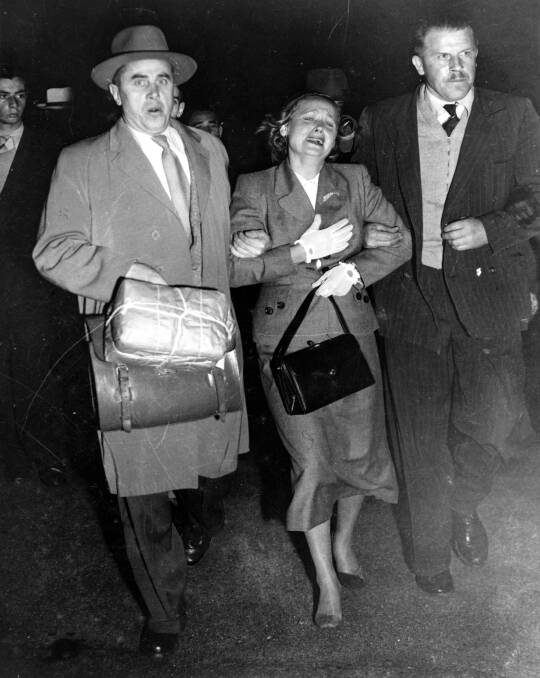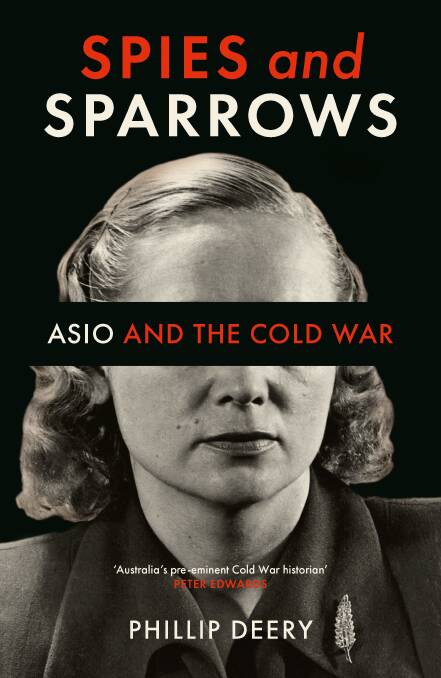
- Spies and Sparrows: ASIO and the Cold War, by Phillip Deery. Melbourne University Press, $34.99.
Perhaps understandably, for an enterprise whose central imperative is secrecy, espionage has always had an image problem. The moral conundrum of balancing civil liberties in a diverse and fast-moving democracy still haunts us, perhaps now more than ever. Spooks have been around a long time, but modern espionage arguably begins with Britain's Secret Intelligence Service at the start of the 20th century. Earlier, Kipling had romanticised espionage with his novel, Kim, in which a boy is taught to play "the Great Game" in defence of Empire. It's a fuzzy fictional focus that continued with novels like John Buchan's The Thirty-nine Steps, in which a devil-may-care British amateur leads the ruthless Hun a merry chase. These exploits were arguably more plausible than most of the novelistic nonsense that followed - Greene, Le Carre, and Deighton honourably excepted - but helped mythologise what is, for the most part, a dreary bureaucracy of people who keep secrets from other people in the dangerously puffed-up assumption it somehow makes the world a safer place. Essentially, spying is an argument in favour of ends justifying means. And that's doubtful baggage to be carrying in a crowded and complex world, increasingly frustrated by cultural and ideological factions.
Subscribe now for unlimited access.
$0/
(min cost $0)
or signup to continue reading
The primary concern of our domestic intelligence agency ASIO is that of spy-catching rather than spying, which is handled by our external security organisation, ASIS, which unexpectedly - but perhaps unsurprisingly - escapes notice in Phillip Deery's well-indexed and acronym-listed new book, Spies and Sparrows: ASIO and the Cold War.

Deery is Emeritus Professor of History at Victoria University, Melbourne, and has written widely on communism, espionage and the Cold War. He explores here what I like to see as Graham Greene's "human factor" - stories of people whose lives are diminished by espionage, rather than the spies themselves - such as Anne Neill, a 1950s housewife recruited as a "sparrow", ASIO's codename for agents willing to penetrate Communist Branch meetings to keep track of potential troublemakers. Or the sadness of losing a family, as well as a country, with the tale of Evdokia Petrov, and her Cinderella shoe at Darwin airport, as she joined her husband, Vladimir, the Russian Embassy cipher clerk, in their headline-grabbing defection in 1954.
The Cold War rose from the ashes of WW2, as Eastern Europe faded from sight behind the Iron Curtain, like Alice in Wonderland's cat, casting shadows of a potentially cataclysmic struggle between capitalism and communism, which shuddered to a halt in 1990, when NATO and the Warsaw Pact countries agreed to reduce military power in Europe. ASIO was formally established in 1949, following a crucial Intelligence breakthrough in Washington - codenamed Venona - that decrypted highly classified Russian diplomatic cable traffic to reveal the existence of widespread Soviet spy networks involving members of communist parties in the West, including Australia.
Honest and well-meaning Australians, perhaps carrying recent wartime scars, were leaning towards the perceived justice of CPA (Communist Party of Australia) branches, where they soon became - perhaps more from paranoia than anything else - profiled as Russian fellow travellers on ASIO's rapidly expanding files. Deery carefully examines how ASIO's Cold War quest for national security impacted a cross section of usual suspects; good, bad, and bizarre, from both sides of the espionage fence, case studied in chapter sequence. Tom Kaiser, for example, was a working class "gifted battler" whose brilliant career in physics was blighted by communist sympathies; William Dobson's passionate anti-communism, motivated by a "mixture of adventurism and narcissism" cashed in his own downfall; Max Wechsler's astonishing career from Czech sparrow to possible ASIO agent provocateur; and the willingly recruited Anne Neil, who saw communists as an affront to Christianity, but became one of them for ASIO's benefit.
The Petrov defections - coinciding conveniently with a Federal election that launched the Menzies era - was an ASIO success, as the unhappy couple possessed valuable information, although it soon became clear that Evdokia was more useful than Vladimir since she possessed a higher Soviet Intelligence rank. However, her life in Australia was lonely and sad, mourning a loss of family, and struggling with a sense of guilt at having betrayed her country.
This thoughtfully detailed book offers timely reflection - given recent inchoate protests about "freedom" (a fatally overworked abstract noun) - on how our security services evolved.
Since 11 September, 2001, Australia has enacted a total of 85 new federal anti-terrorism laws. Which perhaps invites this consideration - where you have secrets, there, sooner or later, you will have sin.

